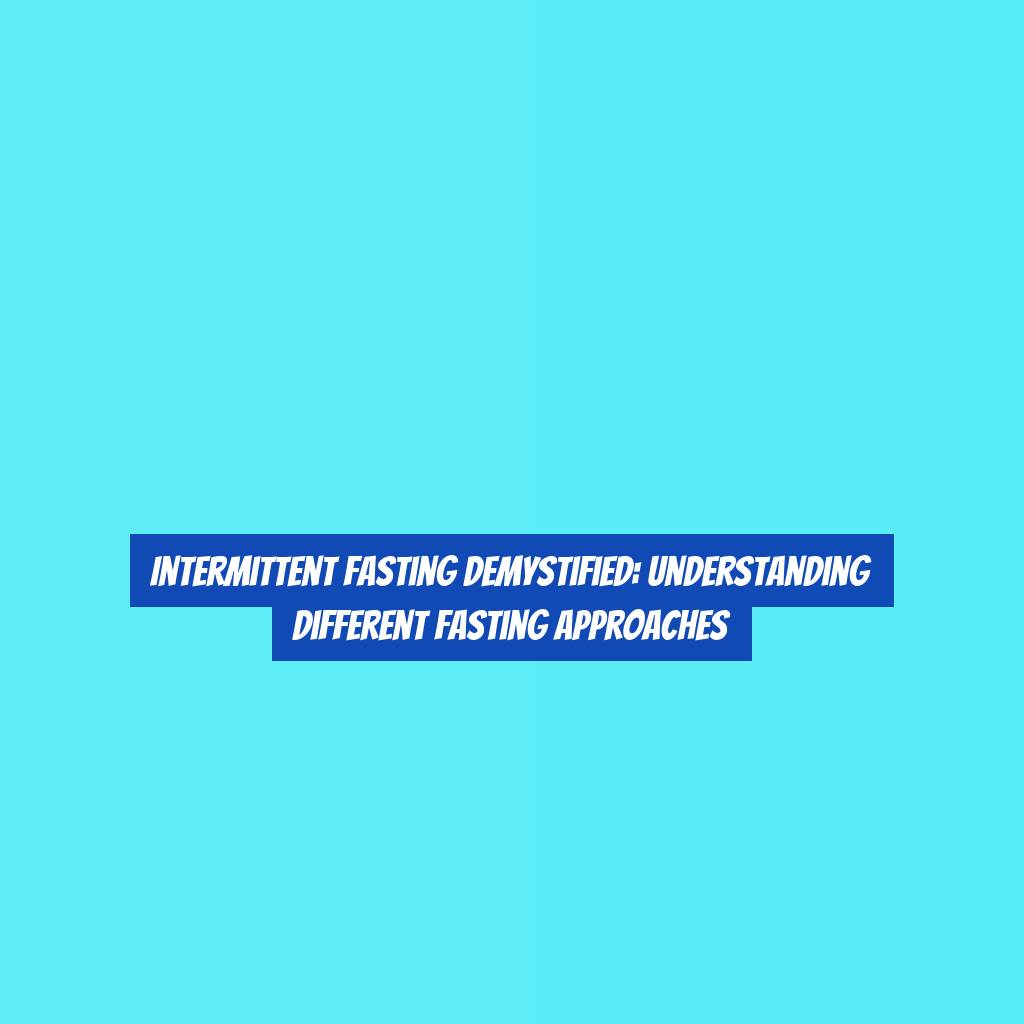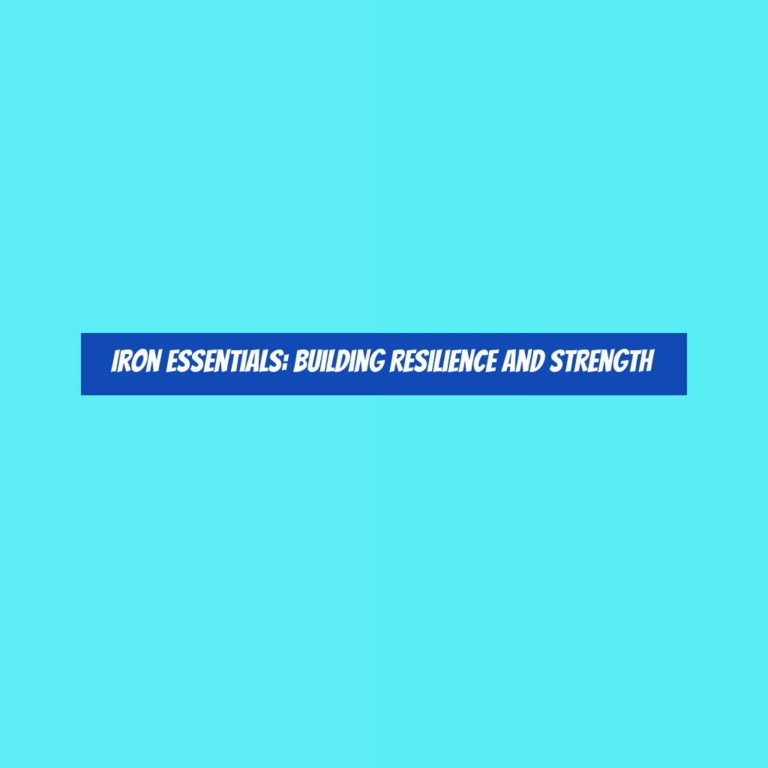Intermittent Fasting Demystified: Understanding Different Fasting Approaches
YouG??ve probably heard the old saying, G??patience is a virtue.G?? When it comes to intermittent fasting, this adage rings especially true.
ThereG??s a myriad of fasting approaches out there, each with its own set of rules and benefits. But how do you know which one is right for you?
Understanding the different fasting methods and their potential impact on your health and lifestyle can be the key to unlocking the benefits of intermittent fasting.
The 16/8 Method
The 16/8 method of intermittent fasting involves restricting your eating to an 8-hour window each day, with a 16-hour fasting period in between. This approach is popular because itG??s relatively simple to follow and can be easily incorporated into most lifestyles. For example, if you start your eating window at 12:00 pm, youG??d finish eating by 8:00 pm and then fast until 12:00 pm the next day.
During the fasting period, your body has a chance to tap into its fat stores for energy, which can aid in weight loss. Additionally, this method may help regulate blood sugar levels and improve insulin sensitivity. When you do eat, itG??s important to focus on nutrient-dense foods and stay hydrated.
ItG??s crucial to listen to your body and ensure that youG??re still consuming enough calories and nutrients during your eating window, as undereating can have negative effects on your metabolism and overall health. If you find it challenging at first, give yourself some time to adjust. With consistency, the 16/8 method can become a sustainable and effective way to approach intermittent fasting.
The 5:2 Method
Consider trying the 5:2 method of intermittent fasting, which involves eating normally for five days and then restricting your calorie intake for two non-consecutive days each week. On the two fasting days, men typically consume 600 calories, while women consume 500 calories. The beauty of this approach is that it allows for flexibility in choosing which days to fast, making it easier to fit into your schedule.
During the fasting days, itG??s important to focus on consuming nutrient-dense foods to help you feel satiated while staying within the calorie limits. Many people find it helpful to distribute their calorie intake across the day, with small meals or snacks to keep hunger at bay.
One of the major benefits of the 5:2 method is that it doesnG??t require daily calorie counting or strict meal planning. This can make it a more sustainable option for some individuals. Additionally, research suggests that the 5:2 method may aid in weight loss, improve metabolic health, and even offer some protection against age-related diseases.
Before starting the 5:2 method, itG??s essential to consult with a healthcare professional, especially if you have any underlying health conditions or concerns.
Alternate-Day Fasting
Considering an alternative to the 5:2 method? Try alternate-day fasting, where you eat normally one day and then restrict your calorie intake the next. This approach is gaining popularity due to its simplicity and potential health benefits. HereG??s what you need to know about alternate-day fasting:
-
Modified Approach: Some people find it challenging to stick to a complete fast every other day. As a result, they opt for a modified approach where they consume a limited number of calories (usually around 500) on fasting days.
-
Flexibility: The modified approach offers more flexibility and may be easier to sustain over the long term. It allows for some food intake on fasting days, making it more feasible for individuals with busy lifestyles or specific dietary requirements.
-
Potential Health Benefits: Research suggests that alternate-day fasting may lead to weight loss, improved insulin sensitivity, and reduced inflammation. However, more studies are needed to fully understand its long-term effects on overall health and sustainability.
Alternate-day fasting can be an effective intermittent fasting method for weight management and overall health, but itG??s essential to consult with a healthcare professional before making significant changes to your eating habits.
Eat-Stop-Eat
If youG??re looking for a straightforward intermittent fasting approach, Eat-Stop-Eat may be the right choice for you. This method involves fasting for a full 24 hours once or twice a week. For example, you might finish dinner at 7 p.m. and then not eat again until 7 p.m. the following day. During the fasting period, itG??s important to consume zero-calorie beverages like water, tea, or black coffee. This fasting approach allows for flexibility in choosing which days to fast, making it easier to fit into your schedule.
One of the key benefits of Eat-Stop-Eat is its simplicity. ThereG??s no need to count calories or restrict certain food groups during non-fasting periods. Additionally, proponents of this method argue that the 24-hour fasting window allows for more significant metabolic changes and fat burning compared to shorter fasting periods. However, itG??s important to listen to your body and ensure that youG??re not overcompensating for the missed calories during non-fasting days, as this could negate the benefits of the fasting periods.
As with any fasting approach, itG??s essential to consult with a healthcare professional before starting Eat-Stop-Eat, especially if you have any underlying health conditions.
The Warrior Diet
The Warrior Diet involves a daily eating pattern that alternates between a period of undereating during the day and a larger meal at night. This approach is based on the idea that our ancestors ate very little during the day while hunting and gathering, and then feasted at night.
-
Undereating during the day: You consume small amounts of raw fruits and vegetables, fresh juice, protein shakes, and small servings of lean protein during the day. This is meant to keep your body in a fasted state and enhance alertness and mental focus.
-
Feasting at night: You have a large meal at night, typically within a 4-hour window. This meal includes both raw and cooked vegetables, healthy fats, and a large serving of protein. This feast is meant to provide the body with essential nutrients and energy after a day of undereating.
Conclusion
So, whether you choose the 16/8 method, the 5:2 method, alternate-day fasting, eat-stop-eat, or the warrior diet, intermittent fasting can be a powerful tool for weight loss, improved metabolic health, and overall well-being.
ItG??s important to find the approach that works best for you and to consult with a healthcare professional before making any drastic changes to your eating habits.
With a better understanding of these different fasting approaches, you can make an informed decision about incorporating intermittent fasting into your lifestyle.




